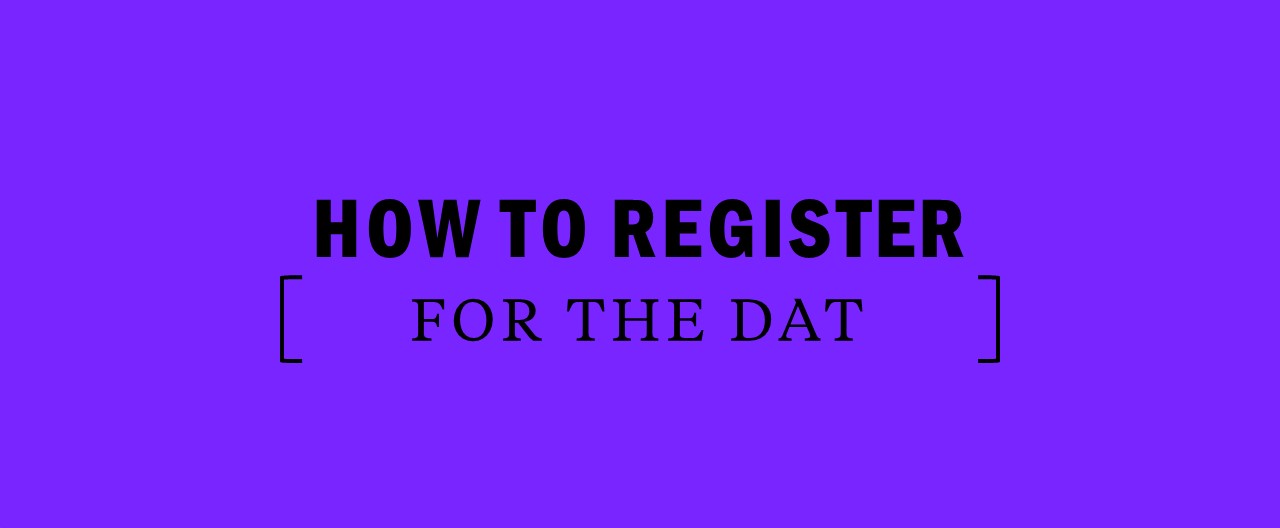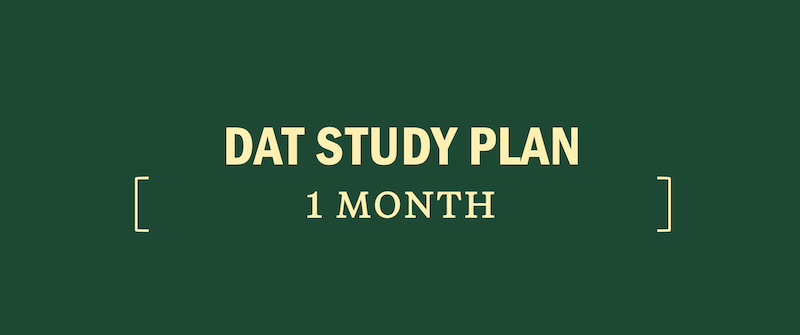DAT Scores and Strategies
Your DAT score is more than just a formality in the admissions process. Dental school admissions committees use your DAT score in conjunction with your academic record to assess whether you have the academic foundation upon which to build a successful dental career. Consequently, a high score on the DAT will have a direct, positive impact on your dental school application.
The DAT is designed to provide dental schools with common measures for comparing the qualifications of applicants. The exam measures general academic aptitude, comprehension of scientific information, and perceptual ability. The test is offered exclusively on computer and consists of a battery of four distinct tests: Survey of Natural Sciences, Perceptual Ability, Reading Comprehension, and Quantitative Reasoning.
Scoring on the DAT can be incredibly confusing for the uninitiated. Performance on the test is denoted by a set of seven distinct scores. You will receive a separate score for Reading Comprehension, Perceptual Ability, Quantitative Reasoning, and each of the science disciplines tested in Survey of Natural Sciences—biology, general chemistry, and organic chemistry. In addition, you will receive an Academic Average Score, which takes into account your performance on all of the sections of the exam except Perceptual Ability.
Each of these scores is reported on a 1-30 scale (30 being the highest possible score). A score of 18 typically signifies average performance on a national basis. Scores are based on the total number of correct answers; so there is no penalty for guessing.
Taking the Canadian DAT? See how it’s scored differently.
You will receive your test results immediately after completing the exam. With your test registration fee, you can send your official DAT transcripts to all the dental schools you select at the time of your application. Additional transcripts for schools not selected at the time of application are available for $36 each.
A note of caution: You can retake the DAT; however your scores cannot be voided. Your last four test results will be included on any official transcripts.
DAT Strategy Session
Having a strategy for each section of the DAT can greatly improve your DAT score. Let’s look at some simple strategies to help you get the best score possible.
Natural Sciences
Strategy: Intelligent Guessing
So it’s not what you want to hear. But in order to do well on the Survey of Natural Sciences, you really need to know the key concepts in biology, general chemistry, and organic chem—you won’t just be able to walk into the test and wing it.
That said, there are some easy steps you should take to maximize your score on the DAT. First of all, when in doubt, guess. Every question is worth the same amount, and there is no penalty for guessing. So you should always answer every question, whether you’ve actually gotten to that question or not. Never let time run out without answering every question.
By the same token, if you find yourself spending too much time on one question, you can submit a tentative answer and then take advantage of the “Mark” feature on the computer. This will allow you to easily review these questions if you have extra time once you’ve completed the rest of your answers.
Perceptual Ability Test
Strategy: Counting Cubes
When you come to the Cube Counting section of the PAT, don’t count and recount the cubes for each question. This will just duplicate your efforts and waste time. Instead, take some time up front to tally all the cubes in the object. Make a list on your scratch paper with entries of “0 sides painted” to “5 sides painted” (since no cubes have the bottom painted).
Then methodically go over the stack, and check off the appropriate column for each cube. After you’ve finished, add up all the entries to make sure you haven’t left out any cubes. Now as you look at the questions, it will be easy to obtain the answers from your list.
A sample might look like this:
| 0 sides: | none |
| 1 side : | I |
| 2 sides: | IIIII III |
| 3 sides: | IIIII III |
| 4 sides: | IIII |
| 5 sides: | I |
The entries add up to 22, which you can check against the number of cubes in the object to make sure you haven’t missed any. This strategy can save you a considerable amount of time during the Cube Counting section.
Reading Comprehension
Strategy: Active Reading
The best test-takers use a strategic plan for attacking passages and questions in an aggressive, energetic, and critical way. Working this way pays off because it’s the kind of pragmatic and efficient approach that the DAT rewards.
The strategy of attacking the opening paragraph entails being an active reader. This means thinking about what you’re reading, paraphrasing the complicated parts, determining the topic, scope, and passage structure, and author’s voice and purpose, and asking yourself questions about the passage.
Consider the following example:
By quickly determining the topic and scope while reading, we can easily deduce why the author is writing and notice the structure of what will follow. Actively reading passages can save a considerable amount of time once you get to the questions.
Quantitative Reasoning
Strategy: Picking Numbers
Picking numbers is a powerful alternative to solving problems by brute force. Rather than trying to work with unknown variables, you can pick concrete values for the variables. Any answer choice that does not work for the concrete values cannot be the correct answer.
Pick simple numbers to stand in for the variables. Next, try all the answer choices, ditching those that don’t agree with the question information. Remember to keep the values you’ve picked for the variables constant throughout the problem. If more than one answer choice works, try different values. The correct choice must work for all possible numbers.
Consider the following example:


